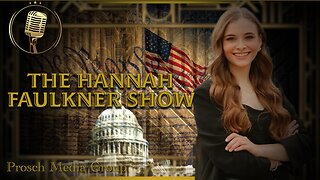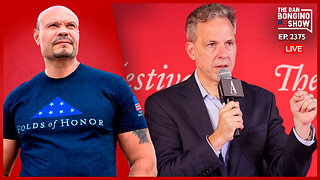Premium Only Content

Lum and Abner 38-12-23 - Lum and Abner's Christmas Story
Christmas, celebrated by most Christians on December 25, commemorates the birth of Jesus of Nazareth. Americans, like many of the world’s peoples, have developed their own Christmas traditions and observances, and these have changed greatly over time.
Today, most Americans blend religious and secular customs with their own family traditions, often incorporating food, decorations and rituals from places they or their ancestors once called home. Roast turkey and ham are popular for Christmas dinner throughout the country, but depending on the region, so are tamales, roast goose with red cabbage, crawfish jambalaya, roast pork or “seven fishes” seafood salad.
In the Southwest, luminarias — lanterns made from brown paper bags weighted down with sand and illuminated by a lit candle — are displayed on Christmas Eve. Many Mexican Americans celebrate Las Posadas, a procession that re-enacts Mary and Joseph’s search for a place to bed down in Bethlehem. Swedish Americans hold St. Lucia festivals, and in Puerto Rico there are parrandas, where friends go from one house to the next singing traditional songs, “surprising” their friends and waking them with their music.
DEVELOPMENT OF THE AMERICAN CHRISTMAS
The early New England Puritans frowned on boisterous Christmas celebrations. In 1659, the Massachusetts colonists briefly criminalized observance of the day, and Christmas remained a regular workday in much of New England and Pennsylvania. Other parts of British North America, however, celebrated with gusto, with costumed revelers going door to door and receiving small gifts of food and drink.
The modern, commercialized Christmas began to emerge in the 19th century with the new custom of purchasing gifts for young children. Seasonal “Christmas shopping” began to assume economic importance.
Other Christmas traditions similarly began during the 19th century. Santa Claus — derived from the Dutch Sinter Klaas and the German Saint Nicholas — assumed the persona of a jolly dispenser of gifts and pilot of a reindeer-drawn sleigh through such works as the 1823 poem “A Visit from Saint Nicholas.”
Germany is credited with starting the tradition of Christmas trees in the 16th century. According to legend, the Protestant reformer Martin Luther first added lighted candles to a tree to remind his children of the wonders of God’s creation. Christmas trees became popular in Britain and the United States in the 19th century.
-
 20:53
20:53
SLS - Street League Skateboarding
2 days agoGold Medals, World Class Food, Night life & more - Get Lost: Tokyo
1.29K -
 47:13
47:13
PMG
17 hours ago"Hannah Faulkner and Doug Billings | WHY LIBERALS LOST THE ELECTION"
252 -
 59:01
59:01
The Liberty Lobbyist
3 hours ago"We Only Have NOW To Make a Difference"
140 -
 4:16:41
4:16:41
CatboyKami
4 hours agoStalker 2 Blind playthrough pt1
551 -
 1:06:27
1:06:27
Russell Brand
4 hours agoNeil Oliver on the Rise of Independent Media, Cultural Awakening & Fighting Centralized Power –SF498
144K222 -
 1:39:14
1:39:14
vivafrei
4 hours agoSoros Karma in New York! Tammy Duckwarth Spreads LIES About Tulsi Gabbard! Pennsylvania FLIPS & MORE
63.2K59 -
 1:57:36
1:57:36
The Charlie Kirk Show
4 hours agoInside the Transition + The Bathroom Battle + Ban Pharma Ads? | Rep. Mace, Tucker, Carr | 11.21.24
114K49 -
 59:20
59:20
The Dan Bongino Show
7 hours agoBitter CNN Goes After Me (Ep. 2375) - 11/21/2024
783K3.28K -
 57:28
57:28
TheMonicaCrowleyPodcast
2 hours agoThe Monica Crowley Podcast: Mandate into Action
3.19K -
 1:02:09
1:02:09
TheAlecLaceShow
5 hours agoGuests: Alex Marlow & Terry Schilling | Justice For Laken Riley | Russian ICBM | The Alec Lace Show
21.7K8